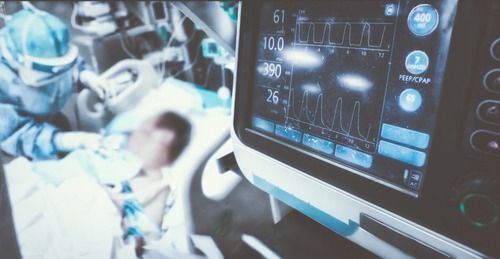
A recent study by scientists at the National Institutes of Health suggests that one in every four COVID-19 deaths in the United States may be attributed to hospitals strained by surging caseloads.
Published in the Annals of Internal Medicine, the study looked at data from 150,000 COVID-19 inpatients from 588 hospitals between March and August of 2020. More than half of those admitted were patients hospitalized during peak COVID-19 surges.
The study found that despite improvements in COVID-19 survival between March and August, surges in hospital COVID-19 caseloads were detrimental to survival and potentially eroded the benefits gained from emerging treatments.
“In a cohort of 558 U.S. hospitals that included approximately 1 of every 7 COVID-19 deaths reported in the United States, we found an association between surge index (a severity-weighted metric of COVID-19 caseload adjusted for baseline hospital capacity) and escalating COVID-19 mortality risk,” the report said. “Importantly, nearly 1 in 4 COVID-19 deaths in our cohort might have been attributable to hospital strain related to COVID-19 caseload. Although baseline inpatient COVID-19 survival improved over the study period, after adjustment for changing case mix and treatment patterns and other temporal hospital factors, mortality risk associated with hospitals experiencing surges was found to increase even more in later study months.”
The surge-mortality relationship was stronger from June to August 2020, despite greater corticosteroid use and more judicious intubation during later and higher surging months. The surge-mortality relationship was found across ward, intensive care unit (ICU), and intubated patients.
The findings suggest that bolstering preventative measures and supporting surging hospitals could save lives. Additionally, the findings could have implications for triage strategies, hospital preparedness, allocation of resources by hospital facilities, and public health authorities’ reactions and assessments of local data. By tracking not only the number of COVID-19 cases but also patients’ illness severity and the hospital’s surge level, hospital officials could pre-emptively divert patients and ask for help sooner, potentially avoiding excess deaths, the study found.




